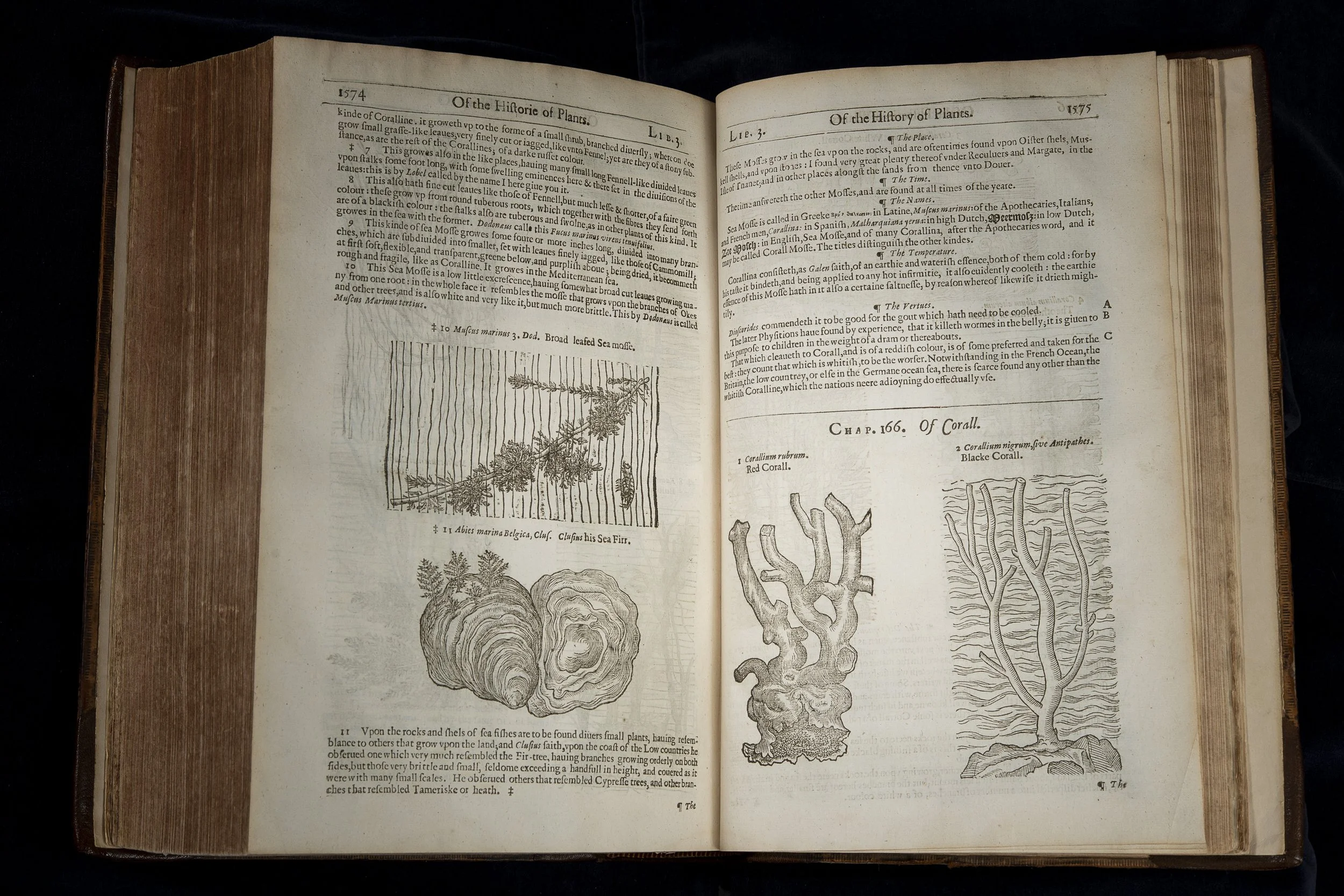FROM CORAL TO CONSTELLATIONS

Ovid, Metamorphosis (1632).
This upper portion of this image from Metamorphosis shows Perseus slaying the Gorgon, Medusa, whose gaze turns people to stone. We also see his battle with the sea monster, Cetus. After the battle Perseus washes the head of Medusa in the ocean, her blood transforms the leaves and twigs under the water into a different substance, coral.
Held in the Kinney Center’s rare book collection.

John Gerard, The Herball, or Generall Historie of Plantes (1633)
While underwater coral is soft and pliant, when it is exposed to air it hardens. In his Herball, Gerard describes coral as capable of being hard as stones, yet its nature makes it more fit to be categorized among the mosses. Coral defies tidy categorization and taxonomy.
Held in the Kinney Center’s rare book collection.

Adam Lonicer, Kreuterbuch (1584)
Although “Kreuterbuch” translates to “herb book” in English, Lonicer’s text contains much more. This page, for example, documents a variety of sea creatures.
Held in the Kinney Center’s rare book collection.

Ludovico Ariosto, Orlando Furioso (1609)
Perseus and Cetus is not the only instance in literature of a hero battling a seemingly unstoppable sea monster. In this Italian epic poem the knight Orlando fights against a creature known as an "orc".
Held in the Kinney Center’s rare book collection.

Julius Hyginus, Poetica Astronomica (1578)
The subjects of Greek and Roman mythology are often placed among the stars and appear as constellations, including Cetus, and as we see here, Perseus.
Held in the Kinney Center’s rare book collection.